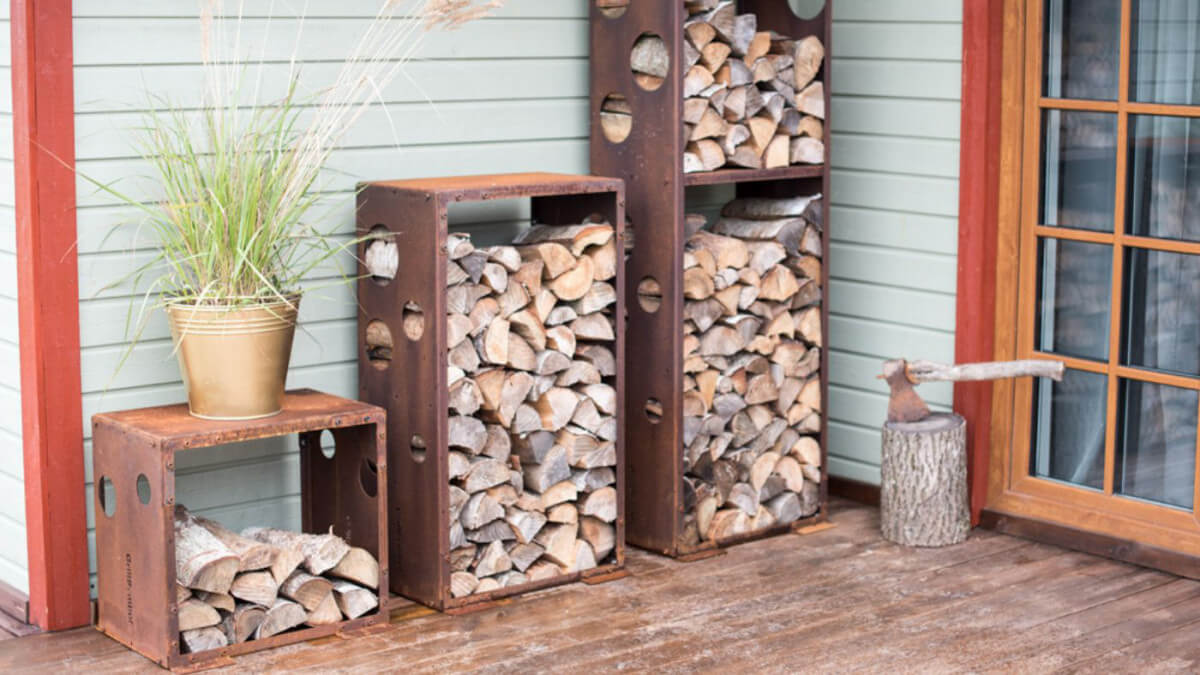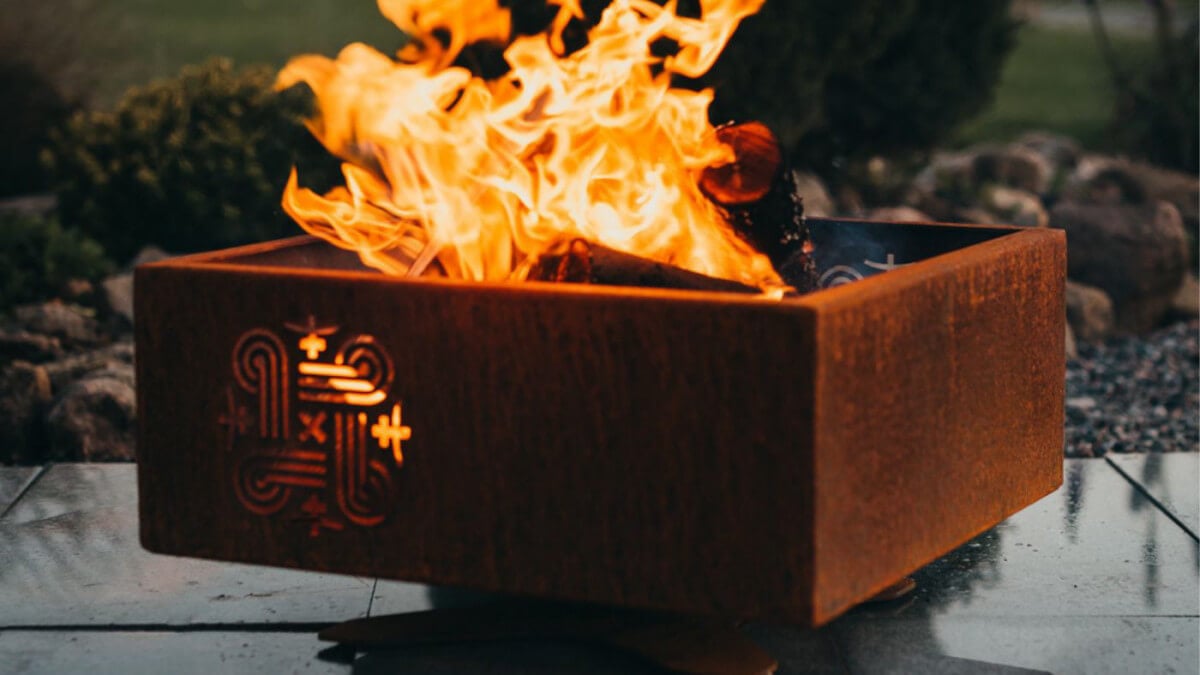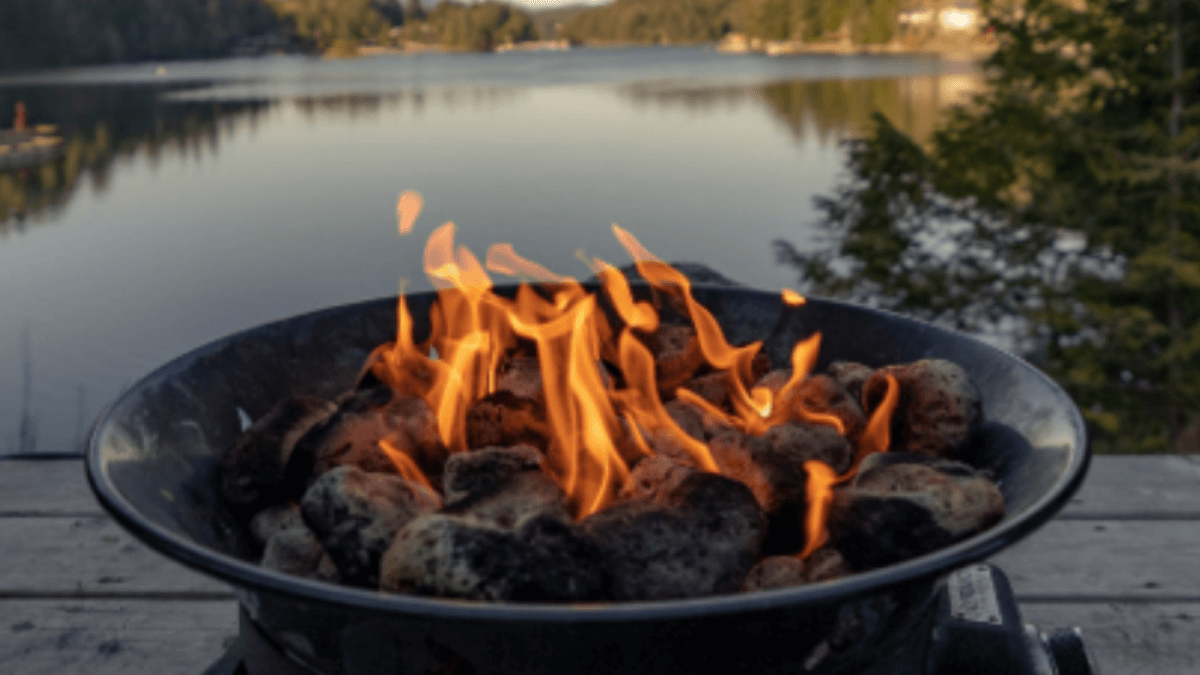What is the Best Wood for a Fire Pit?
The best wood to use on a fire pit is sustainably sourced hardwood. Hardwood burns cleaner and longer than softwoods.
This guide will help you understand the BEST and WORST woods for lighting your fire pit, and maintaining a fire and also the best wood for cooking. We want you to enjoy your fire pit and protect its longevity, so stick with us...
-
What is seasoned wood?
-
Hardwood vs Softwood
-
What is the best type of wood for a firepit?
-
How do you stack wood in a firepit?
-
What wood should I avoid burning?
Have you ever wondered why you can get so much smoke from the wood in your fire pit or chimenea?
This is probably because you are using unseasoned wood, meaning the wood has a high moisture content. This means you won't get the desired heat, plus lots of smoke!
What is Seasoned Wood
We'll often mention seasoned wood because it burns cleanly when you burn seasoned wood. This clean burn means less smoke and dirt, making it friendlier to the environment.
Seasoned wood has been dried to remove as much moisture content as possible. (Moisture content between 15% and 20% is recommended for the most efficient burn. A higher moisture content will make it harder to burn, plus more smoke.)
Unseasoned wood is also called green wood; avoid this wood for a fire pit
How to Season Wood for a Fire Pit?
There are two popular ways to season wood.
Naturally - Wood is stacked up in the open, exposing it to air and allowing the moisture to evaporate. It usually takes around 6 - 12 months, so seasoning wood is slow.
Artificially - The most effective way is kiln drying the wood. A kiln is a furnace/oven that is used to dry wood. This is a quicker way of removing moisture. Using a kiln takes significantly less time and is the most popular choice.
How Do I Know if the Fire Pit Wood is Seasoned or Kiln Dried Logs?
There are three ways to know if the wood is seasoned: its colour, weight and hardness.
-
Colour - The colour of the wood will fade over time when seasoned
-
Weight - Once the wood dries and loses moisture, it becomes lighter
-
Hardness - Dried wood becomes harder, making it more difficult to split.
Seasoned wood should be stored away from rain and moisture to prolong its lifespan. If it does get wet make sure to leave it air dry for a few days before using.
Which is Best Hardwood or Softwood?
Hardwood is best to burn on a fire pit.
Hardwoods come from deciduous trees (they lose their leaves annually).
Most hardwoods will have a higher density than softwoods, so they will burn cleaner for longer with less smoke.
Which is the Best Hardwood Wood For A Fire Pit?
-
OAK - When seasoned, oak is the best firewood to use. It burns slowly and is long-lasting. It's also great for cooking because of its slow burn.
-
ASH - Produces good heat, good flame and burns slowly.
-
APPLE - Burns slowly and produces good heat. It gives off a pleasant smell and is perfect to use for cooking poultry or fish for added flavour.
-
BEECH - Burns well but quick; make sure it's well seasoned. It provides bright, lively flames and a nice smell
Which is the Best Softwood for a Fire Pit
Softwoods come mainly from trees that stay evergreen. They are less dense and light quickly but have less burn time, making them the perfect wood to start a fire. You can then add hardwood to maintain a slow-burning fire.
-
PINE - Good to use as kindling, burns well and fast to start a fire
-
CEDAR - Pleasant smell and good heat.
What Wood To Avoid On Fire Pits?
There are some woods, even when seasoned, we would avoid.
-
ALDER - This burns quickly and with little heat
-
ELDER - This wood produces a lot of smoke and burns quickly with little heat
-
POPLAR - This wood burns slowly but produces lots of black smoke
-
SWEET CHESTNUT - Spits excessively, so no good on an open fire
-
CHESTNUT - This burns quickly, sparks a lot and produces heavy smoke
How To Stack Wood In My Fire Pit
-
Firstly, make sure you have some kindling. The perfect kindling would be small pieces of kiln-dried wood and some wood wool. Wood wool is a mass of fine, softwood shavings. They are ideal to use as they are quick to light and have a very low moisture content.
-
Using kiln-dried logs and seasoned wood means maximum heat and minimum smoke.
-
Stack the kindling in a Jenga shape with the wood wool in the middle.
-
Stack your chunks of dry, seasoned hardwood around the Jenga stack of kindling. Start with your smaller pieces of wood; you can add more once the fire has started.
-
Use a long neck lighter to light the kindling. It may take a few minutes for the larger logs to catch.
-
Add your larger pieces of seasoned hardwood once you have a good fire going.
Can I Burn Anything On My Fire pit?
No is the simple way to answer this. There can sometimes be a temptation to burn household items but trust us; this can be a potentially harmful move.
-
Plastics - If you burn plastics, they can release toxic chemicals that are harmful to us and the environment
-
Magazines - Sounds harmless, but the ink can be harmful when burned. Stick to seasoned softwoods to start your fires.
-
Driftwood - Can release toxic chemicals when burned. It can also release salt, which can lead to corrosion.
-
Treated woods - Best to avoid in case it releases any toxic chemicals.
Is Burning Hardwood Sustainable?
Yes, burning hardwood is sustainable when the wood is sourced responsibly.
Sustainable wood will come from sustainably managed forests. It's renewable because the forest stewards manage the landscape to prevent damage to ecosystems, wildlife and trees.
How do I know the wood is sustainable?
Look for the FSC logo; their certification system provides internationally recognised trademark assurance.
They help guarantee that the wood comes from sustainable sources where it is replaced after harvesting and, most importantly, taken without harming the environment.
Burning wood is considered carbon neutral, and as long as you're burning the right wood, it's considered a clean and safe fuel.
Follow our guide, and you'll be well on your way to a beautifully burning fire pit.
Frequently Asked Questions
What Methods Are Available to Season Wood?
-
Naturally: Wood is stacked in the open air to allow moisture to evaporate. This typically takes 6-12 months.
-
Artificial Seasoning Through Kiln Drying Process: In this method, hardwood logs are dried in a kiln, referred to as 'kiln-dried hardwood logs'. This is a quicker process that efficiently removes moisture from the wood.
Why Shouldn't I Use Construction Wood in My Fire Pit?
Using construction wood in your fire pit is not advisable because it might have been treated with chemicals or preservatives. Burning treated wood can release toxic fumes harmful to people and the surrounding environment too. Using known untreated, seasoned hardwood in your fire pit is always safer.
What Types of Wood Should I Avoid Using in My Fire Pit?
Avoid using damp wood, green wood (unseasoned), or poorly seasoned firewood in your fire pit for an efficient and clean-burning fire.
These types of wood have higher moisture content, leading to more smoke and less heat output. Instead, use well-seasoned or kiln-dried hardwood logs for the best results.
What Type of Wood Should I Choose for a Warm, Stable Flame in My Garden Fire or Pizza Oven?
The wood type matters, hardwoods like oak, ash, and apple are recommended due to their high density and low moisture content.
These qualities allow hardwoods to burn steadily, creating a warm fire with a stable flame, perfect for maintaining high, consistent temperatures in pizza ovens. Ensure the wood is well-seasoned or kiln-dried for optimal results. We have written a separate blog post looking at the best wood for a pizza oven.
Post Code Checker
Using a wood burner outside is legal; being a nuisance with an outdoor fire can cause problems with the neighbours and the local council. Here is our local council checker for their guidelines. https://www.firepit.co.uk/pages/post-code-checker
This is currently for postcodes in England and Wales. It will soon expand to Scotland and Northern Ireland.
Subscribe to our email
If you found this blog useful, you can just enter your email address below to receive a monthly email for all our latest Fire Pit related blog posts. You can simply unsubscribe at any time.









